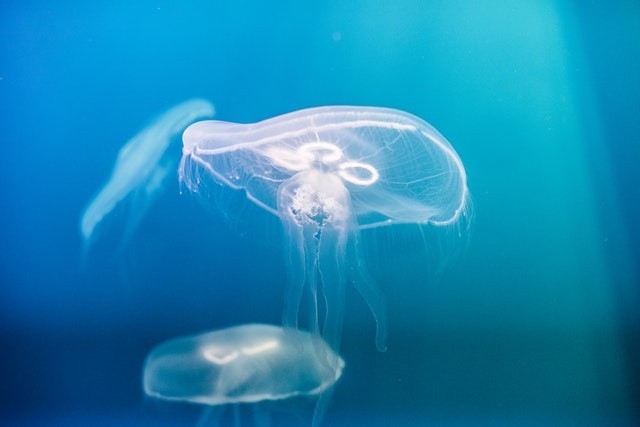Researchers at Florida State University have more insight into a bizarre sea creature discovered in oceans all over the world and what their presence signifies for the health of a marine ecosystem.

What are salps?
Scientists have believed that salps - small marine organisms that resemble clear, gelatinous blobs - struggled for resources with krill, shrimp-like creatures that are an essential food source for most marine animals. But new research released in Limnology and Oceanography proposes that salps are truly competing for food with an organism referred to as a protist.
A researcher with FSU's Center for Ocean-Atmospheric Prediction Studies and also an associate professor in the Department of Earth, Ocean and Atmospheric Science, Michael Stukel said:
"These fascinating and strange animals are becoming more profuse in the extensive and warming Southern Ocean, so we sought to understand how their presence alters marine ecosystems."
Though salps might look like jellyfish, they are one of the first examples of chordates to develop and therefore are more closely akin to humans. These organisms inhabit oceans all over the world and feed on phytoplankton. When their food source is profuse, salps multiply rapidly with the aid of an uncommon reproductive cycle, forming large blooms that comprise thousands of organisms.
The Old Theory
They get rid of carbon dioxide from the atmosphere by consuming algae and then compacting them into minute pellets that submerge to the bottom of the ocean. Salps are also a food source for several marine animals, but they don't give much nutrition.
Their essentiality to the marine food web is surpassed by krill, which are nutritious food for varieties of animals, from small anchovies to massive whales.
The old theory was that salp blooms forced krill out, causing more carbon sequestration but limited food for marine organisms. Rather, salps are possibly replacing minuscule protists that are not an essential food source for enormous organisms in the ocean.
Although salps are much bigger than those protists, they consume the same microscopic algae. Visualize an elephant that consumes the same food as an ant, Stukel said.

The Experiment
To get an understanding of what size prey the salps were feeding on, the researchers constructed a circular tank and filled it with salps and seawater, which has their prey in it. They measured the fluorescence glowing from the prey of the salps inhabiting the water and tracked how it altered over time to know what size prey were being eaten.
Due to the fact that the protists are the same size as their prey, they required to make use of different methods to view what size prey they were eating. The researchers filled one bottle with seawater, which contained a typical amount of prey and protists, and another with diluted seawater, which reduced the frequency with which prey and predator met.
After about 24 hours, they could use the same fluorescence measuring strategy to see what type of prey the protists fed on.
Related Article : 16 Terrifying Deep Sea Creatures Ever Discovered!
For more news, updates about sea creatures and similar topics don't forget to follow Nature World News!
© 2026 NatureWorldNews.com All rights reserved. Do not reproduce without permission.





